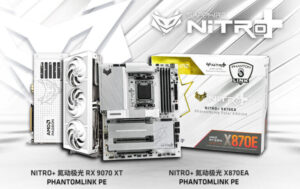
Spatial computing is revolutionizing how we interact with technology, allowing users to engage with multiple virtual screens and applications in a 3D space. At the forefront of this innovation is Rokid’s AR Spatial, a solution that pairs the Max 2 glasses with the Station 2 to offer an immersive work and play experience. While it may not appeal to everyone, Rokid’s offering stands out for its ease of use and integration into daily life.
Rokid AR Spatial is designed to provide an interactive spatial multi-screen experience on a large virtual display, creating a new way to engage with digital content. The bundle consists of the Rokid Max 2 AR glasses and the compact Rokid Station 2, available in black or silver for $700 from Amazon or directly from Rokid.
Technical Specifications and Features
The Rokid Max 2 AR glasses are the centerpiece of this setup, featuring a resolution of up to 1,920 x 1,200, a 120Hz refresh rate, and 600 nits of brightness. These glasses incorporate a birdbath optical solution, using a curved mirror and beam splitter to direct light from a microOLED display to the wearer’s eyes, simulating up to a 300-inch display viewed from 20 feet away.
Comfort is a key consideration in the design of the Max 2 glasses, which weigh just 2.65 ounces. They include built-in per-eye myopia adjustment, allowing users to dial in their prescription needs. However, for greater correction, an insert and lens package solution through Lensology is required.
Rokid AR Spatial 8 / 10 Connective Technology USB-C Speakers Stereo Weight 2.65 oz. Dimensions 8.35 x 4.96 x 3.82 in.
The Station 2, running YodaOS-Master, a mostly Android-compatible operating system, enhances the glasses’ capabilities, allowing for a maximum resolution display and additional features like multi-screen and theater modes. It features 8GB of RAM, 128GB of storage, and a 5,000 mAh battery, supporting up to five hours of usage.
Form and Functionality
Connecting the Rokid Max 2 glasses to a device is straightforward, thanks to the USB-C port that supports DisplayPort USB-C video output. This plug-and-play capability was demonstrated by connecting the glasses to an Apple iPhone 16 Pro Max, delivering both video and audio seamlessly.
The Rokid Station 2 adds further functionality, with two USB-C ports, a power button, and a touch panel for navigation. It supports simultaneous charging and extended use, though an HDMI to USB-C adapter is necessary for interfacing with certain devices like gaming consoles.
YodaOS-Master optimizes the spatial experience, allowing windows to float and displays to follow head movements. Users can connect a Bluetooth mouse and keyboard for easier input, enhancing productivity with features like multi-screen mode, which simulates a three-monitor setup.
Display, Sound, and Performance
The visual experience offered by the Rokid AR Spatial is impressive, with excellent clarity and color, despite some minor blurriness at the edges. The 3D content provides a convincing effect, although the 50-degree field of view limits immersion compared to traditional VR headsets.
Audio quality is solid, with distortion-free speakers at maximum volume, though clarity could be improved. The built-in microphone is functional for voice commands and calls but lacks advanced noise filtering.
“While Rokid promises up to a 300-inch virtual display, my brain was never fooled into thinking it was that big,” notes Bill Loguidice from How-To Geek.
The Station 2 performs reliably, akin to a mid-tier Android device, though its compact size limits airflow, making the fan audible during use.
Should You Buy Rokid AR Spatial?
The Rokid AR Spatial offers a streamlined approach to video glasses, integrating a compact, customized Android-like companion device. The system fits neatly into the included glasses case, making it a convenient option for those seeking immersive digital experiences.
For consumers interested in quality video glasses, the Rokid Max 2 delivers on comfort and performance. However, some features are only accessible with the Rokid Station 2, which may not justify the price for all users. Those looking for a comprehensive spatial computing solution will find value in this bundle, but alternatives exist for those prioritizing cost over convenience.
As spatial computing continues to evolve, products like Rokid AR Spatial highlight the potential for immersive technology to transform both work and entertainment landscapes. Whether this technology becomes mainstream remains to be seen, but Rokid’s offering is a step towards a more integrated digital future.







